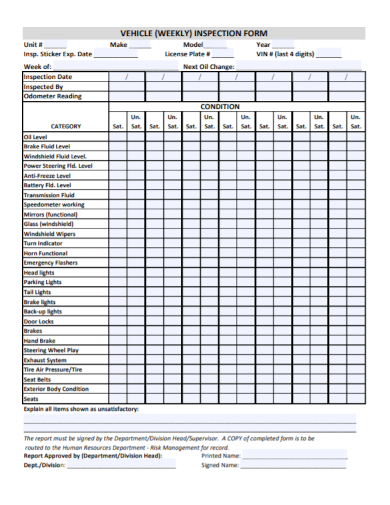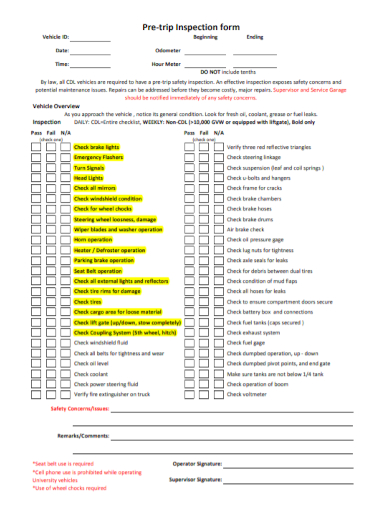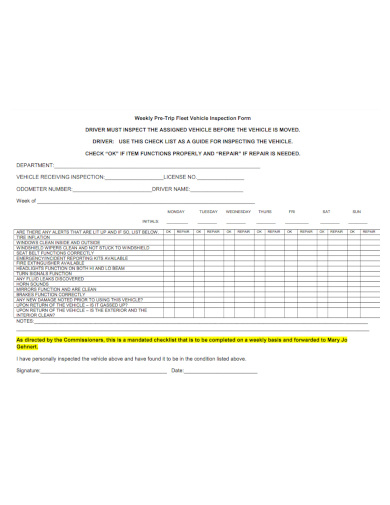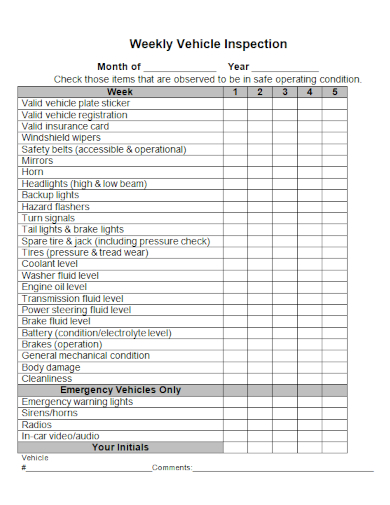According to US statistics, around 38,000 people dire from car crashes alone every year. An estimated 4.4 million individuals get injured enough to need immediate medical attention. Some of the more common causes of car accidents are speeding, distracted driving, and substance abuse. But there is one factor that seems to be overlooked quite often. Vehicle malfunctions. When a car is in poor condition and isn’t properly maintained, a driver is more susceptible to not only bigger repairs and malfunctions, but also puts the driver at a higher risk of being involved in a fatal car accident.
Owning a vehicle is already a lot of responsibility in of itself. It’s not just about driving safely along the road or anywhere else, it’s also about keeping your car in perfect running condition. A car that remains in good shape ensures that the owner is not left with a vehicle that going to leave them stranded in the middle of a highway. Helps avoid the risk of paying a lot of money for long term repairs as well. This is why regular or periodical maintenance inspections are very important. To make sure that your car will run and function properly when you are driving it. Of course, we don’t expect every car owner to know everything about their own vehicles. Most of them will just leave those matters on the hands of their mechanics for repairs and maintenance. Although that’s perfectly alright, having the ability to be able to conduct inspections and basic repairs on your won is a valuable skill to have. Conducting regular maintenance on your own, could just save you so much money in the long run, from not having to bring it to the shop every time. If saving money is what you’re after, or just want to get hands on with your motor vehicle, then the best step to take before conducting any sort of inspection is to develop a weekly vehicle inspection form. Check out these samples listed below to give you a proper idea of what a vehicle inspection checklist would be like. You can even use these samples as guides or templates for when you want to develop your own.
4+ Weekly Vehicle Inspection Form Samples
1. Weekly Vehicle Inspection Form
2. Weekly Beginning Vehicle Inspection Form
3. Weekly Vehicle Pre-Trip Inspection Form
4. Weekly Pre-Trip Fleet Vehicle Inspection Form
5. Sample Weekly Vehicle Inspection Form
What Is a Weekly Vehicle Inspection Form?
Vehicle inspection forms are essentially just checklists. This lets you inspect and assess the condition of your car on your own. It should be able to help you identify basic mechanical flaws and problems by giving you an overview or outline of a certain component and provides a short description of what it’s optimal status should be. A component that doesn’t meet its optimal status would probably mean that it is currently experiencing problems. The inspection form should also be able to help you troubleshoot it to an extent. Weekly inspection forms are checklists that are optimized for periodical inspections, weekly. Now, you should be able to conduct weekly maintenance on your own without having to visit your local motor shop. Imagine how much you would save from having to go to the shop every week to being able to do maintenance on your own. Professional mechanics use the same documents as well, for just about the same reasons. To have a guideline for when they are the ones conducting the inspection. Only difference is, their checklists are much more details and specialized since they deal with more complicated and specific tasks. Overall, it is a vital tool to have to make sure that your vehicle is in perfect running condition.
What to Include in a Weekly Vehicle Inspection Form
Writing your own checklist would generally mean that you are perfectly knowledgeable with all the things about cars. But we’ve already established that there is a good chance that that is not the case. That’s why we have the samples and templates above. They should be more than enough help for you. Right below, we’ll discuss the most basic components that your inspection form has to be able to cover.
- Contact information
No matter the shape or scale of your inspection form, you should always leave a space for the basic information of the car owner and the person doing the inspection. Details such as name, contact numbers, email, and their signature. If you did the inspection on your own car yourself, then you should reflect that as well. - Identification
Aside from their information, be sure to also reflect any sort of identification of the person as well. Driver’s license, government issued ID, registration, the works. - Specify the vehicle’s details
There are countless car models and units out there. Of course, each is different from one another. So it is important to specify the model or brand of the vehicle that you are inspecting. Doing so makes sure that each repair and replacement done will be compatible with the car itself. - Main inspection
This is the most important part of your document because, well this is the checklist itself. Here are the basic components that your inspection form should be able to cover.- Engine oil check
- Battery check
- headlights and signal lights
- Tire treads check
- Windshield wipers
- Belts, gaskets in and around the hood of the car
- Make sure that the emission sticker is up to date
- Brake and rearview lights
- Brake test
That should be able to cover most, if not all. Other additional more specific components depend entirely on the make and build of the vehicle that you are inspecting. Be sure to keep that in mind to have everything covered.
FAQs
Why is a vehicle inspection important?
The most obvious reason to keep your vehicle in perfect running condition is to ensure driver and pedestrian safety.
How do I know if my car needs maintenance?
There are four critical signs that your vehicle may require immediate service. Check engine light is on, bad vibrations, smoke, and bad smell.
What is a daily routine check?
Daily routine checks are inspections done on a regular basis. It usually covers checking the engine fluids such as engine oils, brake fluids, power steering, and transmission.
Making sure that your vehicle is in tiptop shape is good practice. Not only does it protect the driver and passengers but also the pedestrians as well. Of course, it just saves you a whole lot of time and money that would’ve just gone to your mechanic for the most basic maintenance checks.
Related Posts
Sample Employee Declaration Forms
Sample Release of Liability Forms
Sample Training Feedback Forms
Sample Sworn Affidavit Forms
Vehicle Inspection Forms Samples & Templates
Sample Employee Advance Forms
Sample Child Travel Consent Forms
Sample Testimonial Request Forms
Sample Employee Details Forms
Sample Divorce Forms
Sample Attestation Forms
Employee Performance Appraisal Form Templates
FREE 9+ Sample Presentation Evaluation Forms in MS Word
FREE 10+ School Admission Form Samples & Templates in MS Word | PDF
FREE 30+ Patient Consent Form Samples in PDF | MS Word





